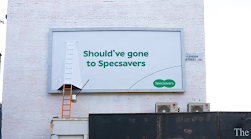Representations of women in advertising
1) How does Mistry suggest advertising has changed since the mid-1990s?
Advertising has changed through empowering women and balancing the female and male roles in advertisement.2) What kinds of female stereotypes were found in advertising in the 1940s and 1950s?
Sexualising women, treating them like objects. They also related images of females being viewed as housewife's and cleaners making it seem impossible for females to dream to do the same jobs as men.
3) How did the increasing influence of clothes and make-up change representations of women in advertising?
It creates a fake perception of women and it makes it seem like how they should do their best to look the best for their husband.
4) Which theorist came up with the idea of the 'male gaze' and what does it refer to?
The male gaze refers to how men look at females sexually. The theorist that this refers to is Mulvey.
5) How did the representation of women change in the 1970s?
The 1970s was evolutionary for women because for the first time there was a advertisement in which a women can be seen inside a office environment.
6) Why does van Zoonen suggest the 'new' representations of women in the 1970s and 1980s were only marginally different from the sexist representations of earlier years?
Because now in the 1970s and 1780s females were seen more in job roles. However earlier on in the years females were only represented as house wife's and mothers.
7) What does Barthel suggest regarding advertising and male power?
8) What does Richard Dyer suggest about the 'femme fatale' representation of women in adverts such as Christian Dior make-up?
Media Magazine: Beach Bodies v Real Women (MM54)
Now go to our Media Magazine archive and read the feature on Protein World's controversial 'Beach Bodies' marketing campaign in 2015. Read the feature and answer the questions below in the same blogpost as the questions above.
1) What was the Protein World 'Beach Bodies' campaign and why was it controversial?
2) What was the Dove Real Beauty campaign?
3) How has social media changed the way audiences can interact with advertising campaigns?
4) How can we apply van Zoonen's feminist theory and Stuart Hall's reception theory to these case studies?
5) Through studying the social and historical context of women in advertising, do you think representations of women in advertising have changed in the last 60 years?

Comments
Post a Comment